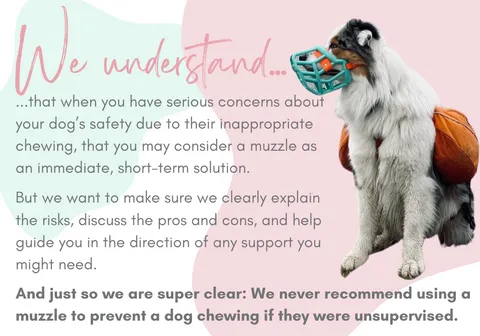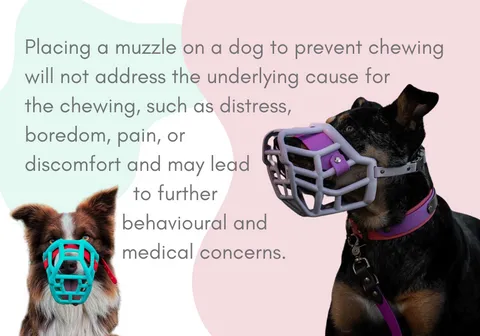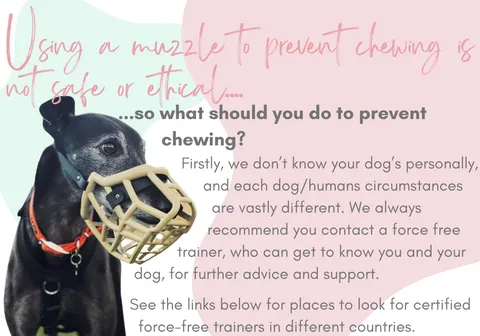When a beloved canine companion begins to destroy household items, whether expensive furniture or sentimental keepsakes, it’s often a frustrating experience for pet guardians. While some may tolerate an occasional chewed shoe, destructive chewing becomes a serious concern when the items are dangerous, such as electrical cords, toxic plants, or sharp objects. This behavior is particularly alarming if the dog ingests these items, posing significant health risks. Furthermore, if a dog’s repetitive chewing interferes with their daily routine—eating, playing, sleeping, or interacting with people—it can signal underlying welfare issues. Often, such habits stem from feelings of stress, boredom, or anxiety, compelling dogs to seek an outlet for their emotions.
It’s crucial to recognize that inappropriate chewing can sometimes be a symptom of an underlying medical condition. Various health problems can lead to increased chewing behavior in dogs, including dental issues, gastrointestinal disorders, nutritional deficiencies, and allergies. If your dog exhibits concerning chewing habits, it is essential to consult with a qualified, ethical professional, such as a veterinarian or a certified behaviorist. They can rule out any potential medical causes and help develop an appropriate and effective treatment plan. The impulse to quickly address the problem often leads owners to consider tools like dog muzzles, especially to stop chewing immediately. However, while muzzles have their place in dog training, their use specifically to prevent chewing requires careful consideration and a deep understanding of canine behavior and welfare.
Understanding Inappropriate Chewing in Dogs
Destructive chewing is a common complaint among dog owners, but understanding its roots is key to addressing it effectively. Dogs naturally explore the world with their mouths, especially as puppies and adolescents. Chewing is a normal and necessary behavior for their physical and mental well-being, helping to clean teeth, relieve discomfort during teething, and provide mental stimulation. However, when this natural instinct targets inappropriate items, it becomes problematic. The distinction between normal and inappropriate chewing often lies in human expectations and the potential harm to the dog or property.
The reasons behind a dog’s destructive chewing are varied and complex. Boredom is a frequent culprit; a dog lacking sufficient mental and physical stimulation may resort to chewing to occupy themselves. Similarly, stress and anxiety, particularly separation anxiety, can manifest as destructive chewing as dogs attempt to self-soothe. Frustration, a lack of appropriate outlets, or even a medical issue can also drive this behavior. When a dog chews excessively, it’s rarely out of malice; instead, it’s often an attempt to communicate discomfort, fulfill an unmet need, or cope with internal states. Consulting a professional can help differentiate between these causes and prevent the escalation of such behaviors.
The Role of Muzzles in Dog Training (and Why Not for Unsupervised Chewing)
Muzzles are valuable tools in various dog training contexts, such as during dog interactions, vet visits, or grooming sessions, where there might be a risk of biting. Muzzle use is appropriate when the guardian is present, the muzzle fits well, and the dog has been properly conditioned to wear it in advance. Many guardians choose to utilize a muzzle as they progress through a comprehensive training plan, which might include supervised, short-term prevention of ingesting dangerous items or chewing. This is always done alongside a plan written by an ethical canine professional, ensuring safety and effectiveness.
However, muzzles should generally not be used to inhibit a dog from performing a natural, normal behavior, unless that behavior poses a significant risk to the animal. Even in such cases, a muzzle should only be part of a wider training program, and the dog should never be left unattended while wearing it. When a dog chews inappropriately, especially when home alone, it is likely an attempt to feel better or cope with underlying feelings. Placing a muzzle on a dog in these circumstances prevents them from chewing but does not address the dog’s fundamental need to chew or the reasons behind it. This approach can be counterproductive and potentially harmful, as it fails to resolve the root cause of the behavior, risking the development of other coping mechanisms.
 Dog wearing a basket muzzle while looking at a chew toy, illustrating responsible muzzle use in conjunction with appropriate chew outlets.
Dog wearing a basket muzzle while looking at a chew toy, illustrating responsible muzzle use in conjunction with appropriate chew outlets.
Medical Considerations When Muzzling to Prevent Chewing
There are numerous compelling reasons why a muzzle should not be used to prevent chewing, particularly when a guardian is not present. The risks associated with unsupervised muzzling are significant and can lead to serious harm. For instance, a dog might panic and attempt to remove the muzzle, potentially injuring themselves in the process. Without a guardian to intervene, this situation can quickly escalate. They might use a paw to try and dislodge the muzzle, leading to a claw getting caught and causing damage to their claw, paw, or mouth.
Excessive head movements to remove the muzzle can result in neck and back strain if sustained over extended periods. Dogs might also rub their muzzle against objects, risking the muzzle getting caught, which could, in severe cases, lead to strangulation. Less serious but still concerning outcomes include facial irritation, hot spots, or sores. A particularly dangerous scenario involves the dog chewing and ingesting parts of the muzzle itself, which could necessitate urgent veterinary attention due to potential medical complications. The risks of using a muzzle to prevent chewing escalate further if the muzzle is poorly fitted, restricting vital behaviors such as chewing, drinking, and eating. A muzzle that prevents a dog from performing these natural actions not only causes discomfort but can also exacerbate the very issues it’s meant to “solve.”
Finally, excessive chewing can be a symptom of pain or discomfort. Ignoring this potential underlying cause by simply muzzling the dog could lead to further medical complications and a continued compromise of the dog’s welfare. It is paramount to address the root cause, not just suppress the symptom.
Behavioral Considerations: Addressing the Root Cause of Chewing
Placing a muzzle on a dog solely to prevent chewing disregards the complex reasons behind the behavior, which are often behavioral rather than merely destructive. There are many potential motivating factors to consider that a muzzle will not resolve:
- Stress and Anxiety: If a dog chews when left alone, it is often an attempt to reduce stress and relieve anxiety, possibly indicative of separation-related behavior. Muzzling the dog in this situation prevents them from self-soothing, likely leading to increased distress. Moreover, the dog may develop negative associations with the muzzle, perceiving it as a precursor to being left alone, making future appropriate muzzle use difficult and failing to address their anxiety.
- Boredom and Under-stimulation: Dogs who chew due to feeling under-stimulated or bored are deprived of appropriate outlets if muzzled. This can intensify boredom and potentially lead to other undesirable behaviors like excessive barking, as their physical and mental needs remain unmet.
- Frustration: Chewing can serve as a displacement behavior when a dog feels frustrated. Muzzling a dog chewing out of frustration is likely to amplify this feeling, as they can no longer access an essential mechanism for regulating their emotions. This can result in other frustration-related behaviors such as barking, jumping, restlessness, pawing, scratching, or even more vigorous attempts to chew—either with the muzzle on or immediately once it’s removed.
- Lack of Autonomy: Dogs may feel frustrated if a muzzle prevents them from performing normal exploratory behaviors, such as picking up, carrying, or chewing objects. A new lack of autonomy, or feeling stuck or trapped in a muzzle they cannot remove, can also cause significant frustration.
- Exploratory Behavior: Some dogs naturally enjoy chewing and exploring with their mouths more than others. Age is a significant factor, as puppies and adolescent dogs regularly use their mouths to learn about the world. Preventing this natural exploratory behavior or failing to provide safe, alternative outlets can hinder learning opportunities and mask signs of an unfulfilled dog.
- Learned Helplessness: If a muzzle is not properly conditioned and fitted, or if the dog feels trapped without a way out, they may cease attempting normal behaviors. This can lead to “learned helplessness,” where the dog no longer tries to move, drink, or eat, as they feel incapable of affecting their situation.
- Behavioral Suppression and Recurrence: Behaviors may be temporarily suppressed by a muzzle, only to reoccur later, often with increased intensity once the muzzle is removed. Alternatively, if chewing is no longer perceived as available, the dog might develop other inappropriate behaviors like jumping, grabbing, and mouthing after the muzzle is taken off.
Additionally, dogs may perceive a muzzle being placed on them as punishment, particularly if there has been no prior muzzle training and the muzzle only appears when chewing starts. The consequences of a dog feeling uncomfortable in a muzzle, especially if it’s forced upon them, include developing fear and avoidance of the muzzle. This can lead to increased sensitivity around the head and neck, potentially complicating future medical treatments such as ear/eye drops, kennel cough vaccines, or oral health checks. Fear or dislike of the muzzle can also prevent its use in legitimate emergency situations where it might be crucial. Ultimately, inappropriate muzzle use risks damaging the relationship between the dog and guardian, potentially leading to more challenging behaviors to navigate in the future.
 A dog in a basket muzzle lying down with toys around it, illustrating an appropriate setting where the dog is comfortable and has other enrichment options.
A dog in a basket muzzle lying down with toys around it, illustrating an appropriate setting where the dog is comfortable and has other enrichment options.
Ethical Alternatives and Solutions to Destructive Chewing
Instead of resorting to a Dog Muzzle To Stop Chewing without addressing the underlying causes, ethical and effective solutions focus on understanding and modifying the behavior. The first and most crucial step is to consult with qualified professionals. A veterinarian can rule out any medical conditions contributing to the chewing, while a certified dog behaviorist can help identify behavioral triggers and develop a tailored modification plan.
Your trainer or behaviorist may also advise on several strategies:
- Dog-Proof Your Home: This is essential to prevent the rehearsal of chewing inappropriate or dangerous items. For some dogs, this might be as simple as removing shoes from the hallway. For others, who chew skirting boards or doors, a more extensive behavior modification program with the support of a force-free behaviorist will be necessary. This proactive step minimizes opportunities for destructive habits to form or continue.
- Ensure Needs Are Met: An unfulfilled dog is more prone to expressing unwanted behaviors. Ensure your dog receives adequate mental and physical stimulation, considering their age, breed, and individual preferences. Some dogs may require more exercise, others more human interaction, and some simply more restful sleep. Meeting these fundamental needs can significantly reduce the drive to chew destructively.
- Increase Enrichment: Provide appropriate outlets for chewing behavior. This includes a variety of long-lasting chews, puzzle toys, snuffle mats, and interactive food toys suitable for your dog’s size and breed. Always supervise initially to ensure safety and enjoyment. Enrichment activities should be easy enough at first to avoid frustration.
- Look for Triggers: A critical step is to track and recognize triggers for inappropriate chewing. This could be anything from people walking by a window to someone leaving the home. Where possible, these triggers should be reduced or removed entirely at the outset and gradually reintroduced with the support of your force-free professional. Understanding and managing triggers is a cornerstone of behavioral modification.
- Limit Alone Time: For dogs exhibiting separation-related behavior or those whose chewing is associated with distress when left unattended, reducing or temporarily eliminating time spent alone may be necessary. A dog walker or sitter can be invaluable in breaking up the day while you work with your trainer on a comprehensive plan.
- Teach Skills Such as “Drop” and “Leave It”: These two invaluable skills can help you manage what your dog chews and prevent accidental ingestion. Teaching “drop” allows you to safely remove an item from your dog’s mouth, while “leave it” teaches them to ignore enticing objects. These skills empower guardians to intervene effectively without applying pressure that might cause the dog to swallow an item to avoid losing it.
 A person's hands holding a dog's head, showing affection and emphasizing the bond between guardian and dog.
A person's hands holding a dog's head, showing affection and emphasizing the bond between guardian and dog.
When Muzzles Might Be Considered (Extreme Cases)
While this article strongly advises against using a dog muzzle to stop chewing as a primary solution, it is important to acknowledge that there are some very extreme, serious, and complex circumstances where muzzles may be utilized. In these rare cases, it should only be done upon the recommendation of a qualified, ethical professional. This requires a non-judgmental approach, understanding that guardians facing such situations often have challenging reasons for considering this option.
Examples of such extreme circumstances include: if a dog’s life is in immediate danger due to self-injurious chewing, if a dog is recovering from surgery to remove a foreign object and a second surgery is not medically possible, if the dog has a severe medical condition where chewing poses a direct threat, or if there’s a documented history of ingesting poisonous or hazardous items despite all other interventions. Even in these few extreme circumstances, the dog should always have a guardian present, and the muzzle must be appropriately introduced, conditioned, and well-fitted to ensure the dog’s comfort and safety. The goal remains harm reduction and welfare preservation, always under professional guidance.
Ultimately, using a dog muzzle to stop chewing should never be a standalone solution. It is crucial to understand that chewing is a natural canine behavior, and when it becomes destructive, it’s a signal that something deeper needs to be addressed. Suppressing the behavior with a muzzle without understanding its root cause can lead to increased stress, anxiety, and the development of other unwanted behaviors, while also potentially harming the bond between you and your dog. Prioritize a holistic approach, starting with a consultation with a veterinarian to rule out medical issues, followed by working with a force-free certified behaviorist. Through patience, consistent positive reinforcement, environmental management, and meeting your dog’s needs, you can guide them towards appropriate chewing outlets and a happier, healthier life.
References
- Pet Professional Guild Australia
- IAABC (LIMA based approach, please research to check trainers with this accreditation are force-free)
- APDT Australia
- IMDT Australia
- CABTi / COAPE
- ABTC (UK)
- APBC
- APDT UK
- IMDT
- PACT
- FABC
- VSPDT / VSA-CDT
- PPG British Isles
- CCPDT (LIMA based approach, please research to check trainers with this accreditation are force-free)
- Fear Free Pets
- Karen Pryor Academy
- Pet Professional Guild US
